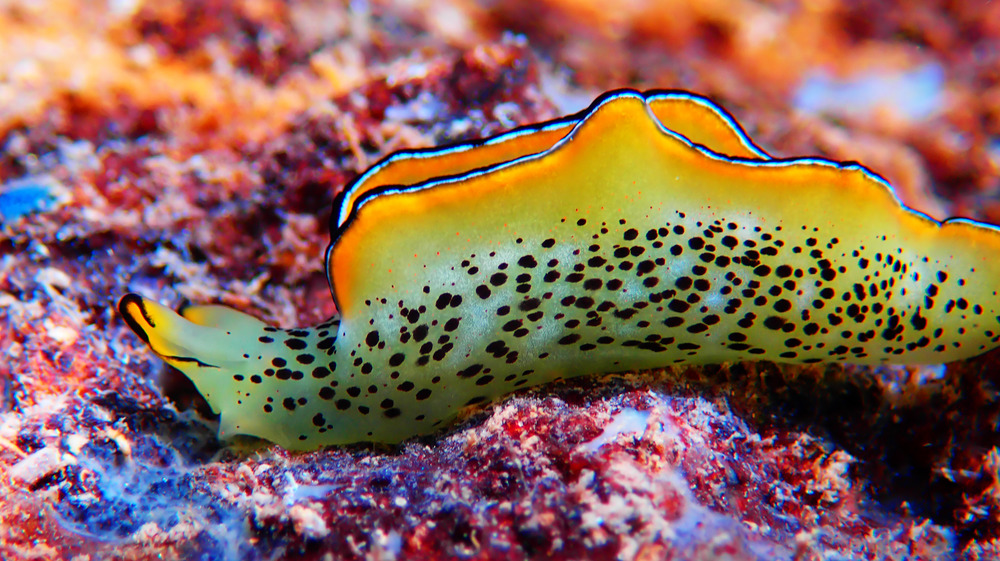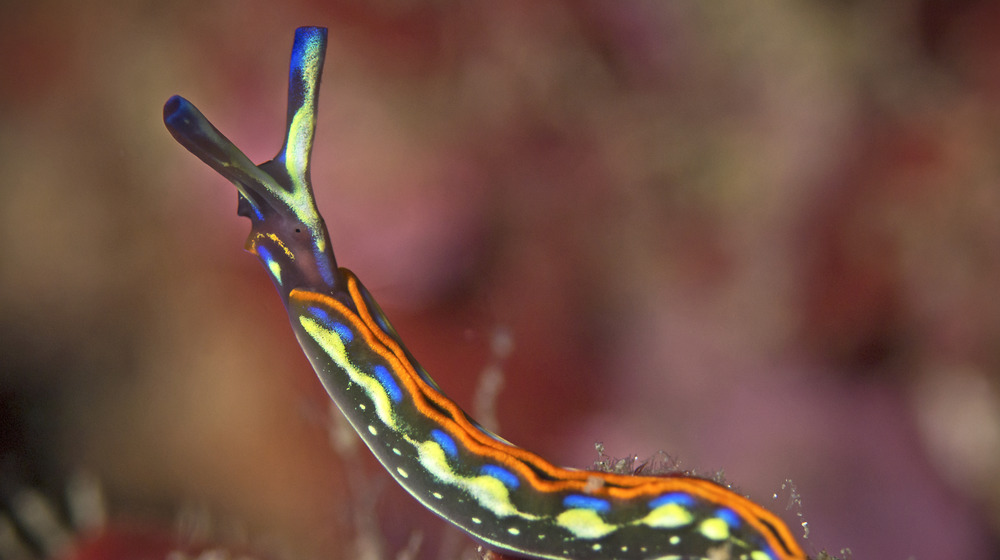The Sea Slug Who Can Regenerate A Brand New Body After Decapitation
There's an animal that's taking body modification to a whole new level.
Scientists have discovered a newfound ability of some sea slugs that, while fascinating, is a little disturbing, reported the Associated Press. The sea slug can regrow its body, even after decapitation. Yep — you read that right.
Sayaka Mitoh, a biology researcher at Japan's Nara Women's University, noticed that several sea slugs in her lab had decapitated themselves. That's odd enough, but that wasn't all. The heads were still moving! A couple of weeks later, some of the decapitated heads regrew their bodies. Mitoh told Live Science, "We believe that this is the most extreme form of autonomy and regeneration in nature." Mitoh was able to reproduce the event herself by decapitating 16 sea slugs, and a few of them did the same thing.
Two species of sea slugs, Elysia atroviridis and the Elysia cf. marginata, can spontaneously remove their heads from their bodies. These disembodied heads can live for days before regenerating a whole new body — vital organs, and all. The process, in this case, took about three weeks. For the first few days, the slugs live with a wound but it closes up before starting to build themselves a new body. And as far as the now-headless body goes, Mitoh said the original slug lived for weeks, even months, without a head.
Mitoh and aquatic ecology professor Yoichi Yusa published their findings in the latest issue of the journal Current Biology.
No slug body, no slug problem
Not all of the slugs in the lab that were used in the study regrew bodies. Older slugs tended to die, instead of regenerating, to which Mitoh attributed to them not needing to reproduce anymore. The researchers believe there's a limit to how many times a sea slug can regenerate their bodies. One of the slugs in the study did it twice, and the scientists think this might be the limit.
Though they don't know why exactly the sea slugs self-decapitate and regrow a bod, the researchers do have an idea of how they do it. Mitoh said sea slugs are capable of photosynthesis when they eat algae. This allows the head to act a lot like a plant and use the energy from the sun and oxygen to start growing again.
While so far, only two kinds of sea slugs are known to undergo this regeneration process, the scientists hope to find more species of slugs capable of the same thing for further tests.
Studying why the sea slugs regrow bodies from decapitated heads has a use that's more than just to creep you out. Scientists believe knowing why sea slugs do this provides a deeper understanding of how cells and tissues repair damage. It can even be useful in creating treatments for injuries.

